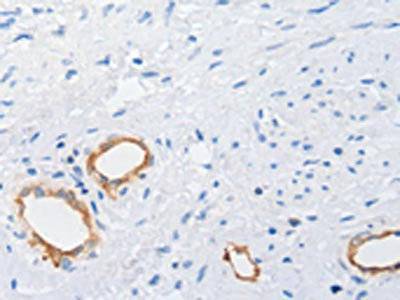Alternative Names
MUC5AC antibody; MUC5 antibody; Mucin-5AC antibody; MUC-5AC antibody; Gastric mucin antibody; Major airway glycoprotein antibody; Mucin-5 subtype AC antibody; tracheobronchial antibody; Tracheobronchial mucin antibody; TBM antibody
Immunogen
Synthetic peptide of Human MUC5AC
Immunogen Species
Homo sapiens (Human)
Purification Method
Antigen affinity purification
Concentration
It differs from different batches. Please contact us to confirm it.
Buffer
-20°C, pH7.4 PBS, 0.05% NaN3, 40% Glycerol
Tested Applications
ELISA,IHC
Recommended Dilution
| Application |
Recommended Dilution |
| ELISA |
1:2000-1:5000 |
| IHC |
1:50-1:200 |
Storage
Upon receipt, store at -20°C or -80°C. Avoid repeated freeze.
Lead Time
Basically, we can dispatch the products out in 1-3 working days after receiving your orders. Delivery time maybe differs from different purchasing way or location, please kindly consult your local distributors for specific delivery time.
Description
The production of the MUC5AC antibody is based on the immunization of rabbits with the synthetic peptide of human MUC5AC and subsequent antigen affinity-mediated purification from the resulting anti-serum. It is a polyclonal antibody and occurs as an unconjugated IgG. It only reacts with human MUC5AC protein. This MUC5AC antibody has been validated for use in ELISA and IHC analyses. The target protein MUC5AC is major gel-forming mucin involved in barrier functions to epithelial cells, host–pathogen interaction, immune cell attraction to sites of premalignant or malignant lesions, and tumor progression in a context-dependent manner.
Usage
For Research Use Only. Not for use in diagnostic or therapeutic procedures.




